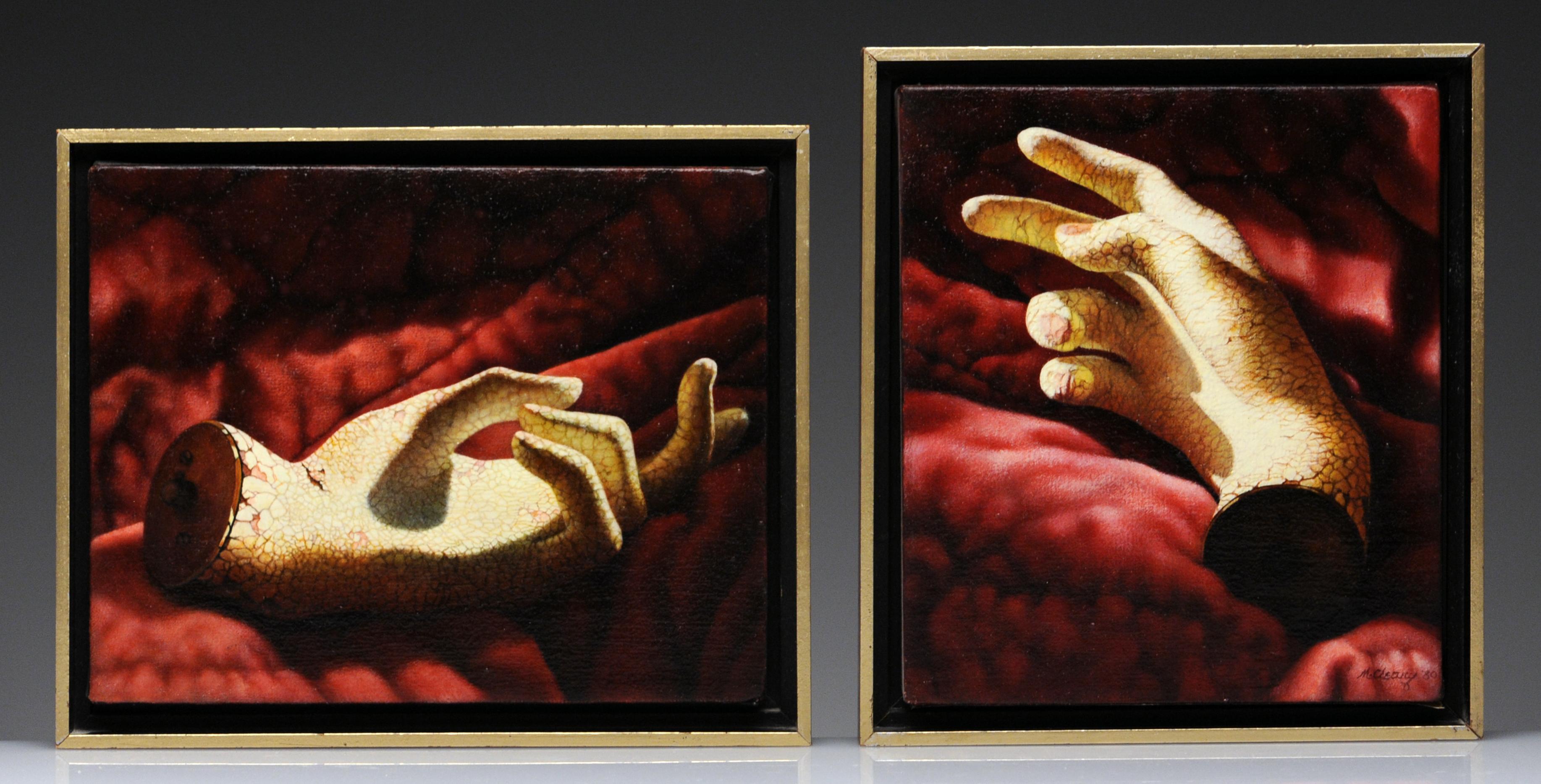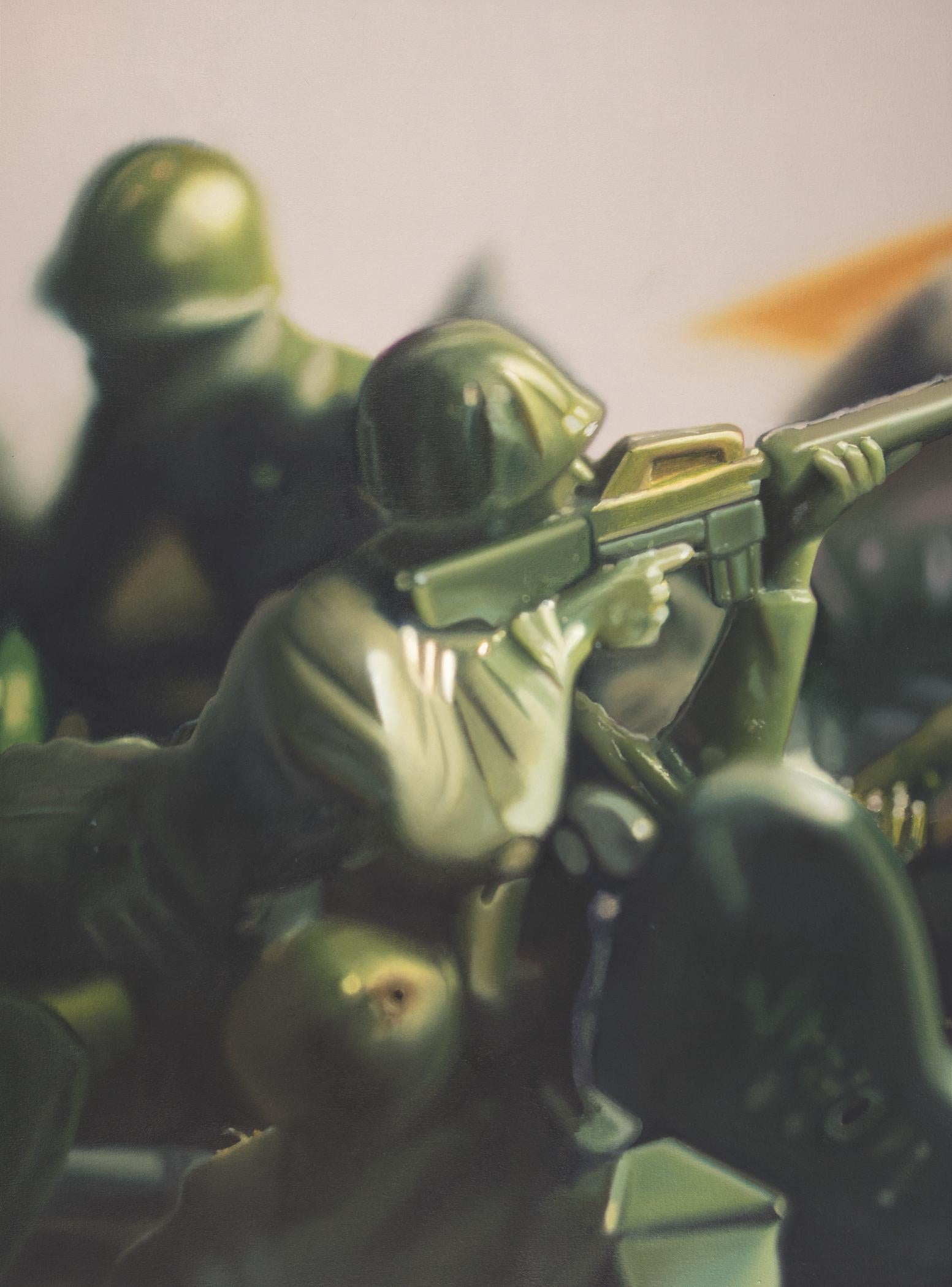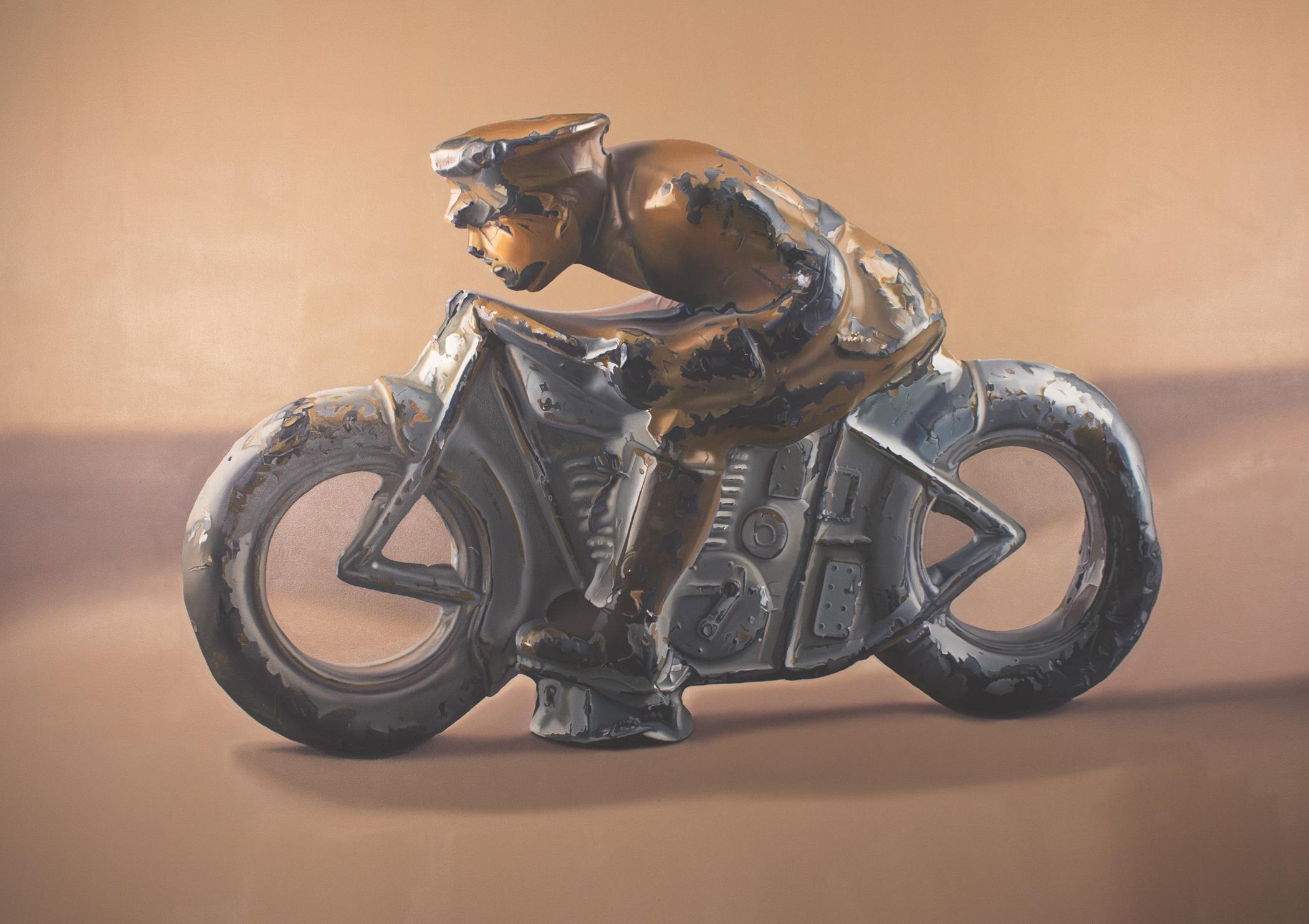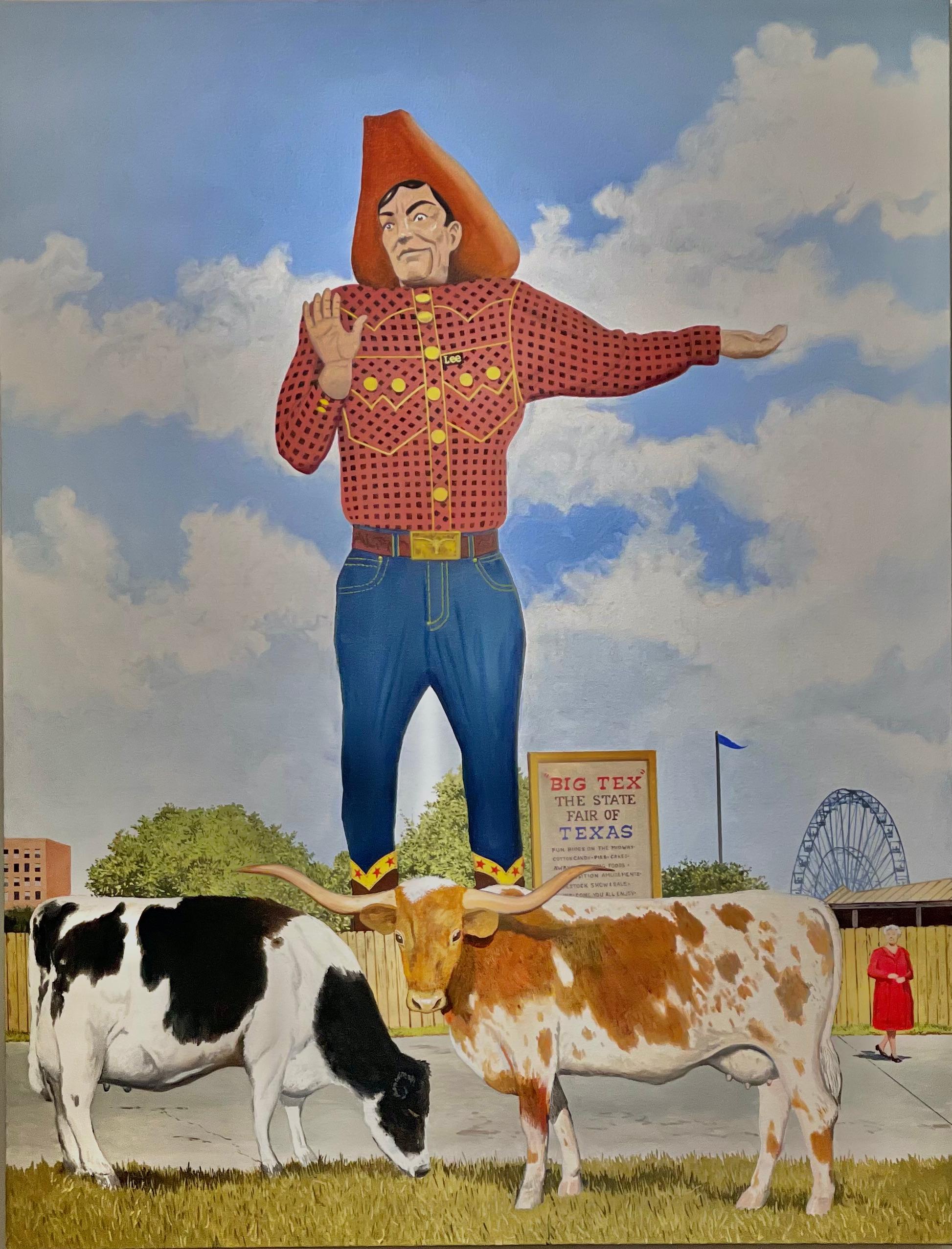Items Similar to Still life with two women Oil painting on canvas by Felice Boselli
Want more images or videos?
Request additional images or videos from the seller
1 of 23
Felice BoselliStill life with two women Oil painting on canvas by Felice Boselli
About the Item
Felice Boselli (Piacenza, 1650 - Parma, 1732)
Still life with two women
Oil on canvas, 98.5 x 164 cm
Frame 108 x 175.5
The refined composition depicting a floral still life with two women is attributable by stylistic and formal characteristics to the Emilian painter Felice Boselli (Piacenza, 1650 - Parma, 1732). Trained in Michelangelo Nuvolone's workshop in a fervid and stimulating environment, Boselli was active mainly in his hometown of Piacenza and in Parma, where in 1680-87 he executed tempera paintings and frescoes for the palace of the Sanvitale counts of Fontanellato, whose court painter he was until after 1710. A multifaceted artist, Boselli tried his hand not only at still lifes, but also at portraits, frescoes of a religious nature (painted in 1702 for the church of Santa Brigida in Piacenza and well exemplified by the sacred background Ecce Homo) and mythological scenes.
In the genre of still life painting, his main references were the study and observation of regional and local works, drawing inspiration from the genre scenes of Annibale Carracci and the works of Parmigianino, especially in terms of the figurations. However, there was no shortage of other references, starting with Angelo Crivelli (known as the Crivellone), an animalist specializing in game known in the period of his training, the painters of the Bergamasque school in particular (Baschenis and Bartolomeo Bettera), and ending with Nordic ancestry and Neapolitan examples. A total of nearly a hundred still lifes are known of Boselli, most of which are preserved in museums in Lombardy and Emilia, as well as a good number of paintings representing episodes of daily life with cooks, pigs, ox heads, chickens, game, and fish, often "signed" with the depiction of a kitten (signifying Felix).
In the still life analyzed here, two women hold a basket and a colorful garland of flowers that even comes to decorate the statue of a satyr placed on an elegant balustrade. One of the women leans over the parapet delicately extending her hand in the gesture of plucking a white carnation, while the other holds up the basket, looking complicitly at the viewer. Both appear richly attired and embellished with pearl parures and wide hats, also decorated with vibrant flower arrangements. The detailed and meticulous description of different floral species illuminated by vivid strokes of light is striking.
For comparison see two works by Boselli of the same subject and similar composition: the Flower Girl, dated to the first decade of the 18th century, and the Girl with Game (1720-1730) located in a private collection in Vaprio D'Adda.
- Creator:Felice Boselli (1650 - 1732, Italian)
- Dimensions:Height: 42.52 in (108 cm)Width: 69.3 in (176 cm)
- Medium:
- Period:Late 17th Century
- Condition:
- Gallery Location:Milan, IT
- Reference Number:1stDibs: LU2639213034892
About the Seller
No Reviews Yet
Vetted Seller
These experienced sellers undergo a comprehensive evaluation by our team of in-house experts.
1stDibs seller since 2023
- ShippingRetrieving quote...Ships From: Milan, Italy
- Return PolicyA return for this item may be initiated within 14 days of delivery.
More From This SellerView All
- Still life with fruits on a shelf Oil painting on canvas Paolo PaolettiLocated in Milan, ITPaolo Paoletti (Padua, 1671 - Udine, 1735) Still life with fruits on a shelf Oil on canvas, 53.5 x 81 cm Expert opinion Dr. Gianluca Bocchi The still life under consideration can...Category
18th Century Figurative Paintings
MaterialsCanvas, Paint, Oil
- Still life with musical instruments Oil painting on canvas Antonio TIbaldiBy Antonio TibaldiLocated in Milan, ITAntonio Tibaldi known as the Count (Rome, 1633 - documented until 1675) Still life with musical instruments, sheet music and riser with sweets Oil on canvas, cm 120 x 169 Frame, 1...Category
17th Century Still-life Paintings
MaterialsCanvas, Paint, Oil
- Battle scene Oil painting on canvas Attributed to Karel BreydelBy Karel BreydelLocated in Milan, ITAttr. to Karel Breydel, known as the Knight of Antwerp (1678 - 1733) Battle with knights and landscape in the background Oil on canvas, cm 44.5 X 36.7 Frame 52.5 x 45 cm The pain...Category
Late 18th Century Figurative Paintings
MaterialsCanvas, Paint, Oil
- Presentation of Mary in the Temple Oil on canvas Scope of Pietro BardellinoBy Pietro BardellinoLocated in Milan, ITScope of Pietro Bardellino (1728-1806), circa 1760s Presentation of Mary in the Temple Oil on canvas, 163 x 150 cm With frame, cm 166 x 152 Dealt with in the proto-gospel of James, an apocryphal gospel, Mary's presentation to the temple remains to this day one of the most moving Marian artistic episodes. The moment figured here, in which the little Virgin is encouraged to the high priest by her nobly determined mother Anna, encapsulates a composition harmoniously cradled between Baroque and Classicism. All present turned in amazement to observe the young woman's unexpected entry into the sacred premises, while a direct light detached her figure from the soft incensed air. This strong expressive naturalness, added to the clear formal concreteness used by the artist, intoxicates the painting with the academicism already belonging to Francesco Solimena and Giacomo del Po, on a par with the greatest Neapolitan masters. The thoughtful consistency with which the artist organizes the luminous and tangible colors also formalizes his dependence on Pietro Bardellino, a distinguished exponent of the first Rococo investigations on Neapolitan soil. Committed from his youth to the great hall of the Farmacia degli Incurabili, Bardellino turned to the Oratory of the Confraternity of the Whites of the Holy Spirit, working at the same time for Bitonto Cathedral. Appointed a member of the Academy of Fine Arts, he was recalled there as an active collaborator by Vanvitelli himself, in 1773. A debtor in turn to the style of Francesco de Mura, his master, by the mid-18th century Bardellino was already registered as a fresco painter at the main royal residences of Ferdinand IV of Bourbon, reaching the pinnacle of his success there in 1781 with the commission to fresco The Virtues Crowning Ferdinand IV and Maria Carolina on the huge ceiling of the Grand Hall of the Palazzo dei Regi Studi in Naples (later to become the Royal Bourbon Museum used in our days as the National Archaeological Museum of Naples). This evidence allowed him to become a master in the technique of fresco painting, boasted therefore at several noble residences, among the interiors of which it is possible to recall those of Cellamare, Ischitella and Spinelli di Fuscaldo. A coloristic lucidity, similar to that which shines in the present, returns in Bardellino's late works, now exhibited in the old apartment of the Reggia di Caserta (Science and the Arts, Peace and War, Innocence, Simplicity, Truth, Day and Night), albeit colder, due to the artist's adoption of the northern European art trends fashionable at the court of the Bourbon consort Maria Carolina, also influencing Corrado Giaquinto...Category
18th Century and Earlier Figurative Paintings
MaterialsCanvas, Paint, Oil
- Jacob's departure for the land of Canaan Canvas from the Grechetto WorkshopLocated in Milan, ITWorkshop of Gio Benedetto Castiglione called the Grechetto (Genoa, March 23, 1609 - Mantua, May 5, 1664) Jacob's departure for the land of Canaan Oil on canvas, 80 x 115 cm - Fra...Category
17th Century Figurative Paintings
MaterialsOil, Canvas
- Game of bowls Oil painting on canvas by Domenico OliveroLocated in Milan, ITDomenico Olivero (Turin, August 1, 1679 - January 13, 1755) Game of bowls Oil on canvas, 43 x 65 cm With frame, 54.5 x 76 Expert opinion Prof. Alberto Crispo The painting shown here depicts peasants playing bowls near a farmhouse, while one of them offers sweets to a little girl. The canvas, in my opinion, can be traced back to the hand of Pietro Domenico Olivero (Turin, August 1, 1679 - January 13, 1755), as revealed by comparisons with other works by the artist, such as the Peasants' Feast already at the Gilberto Zabert Gallery in Turin, where we find an entirely similar layout, with the figures crowded around the building, placed on the left, and some household goods piled up on the right, including a copper cauldron almost identical to the one sketched in our painting. But see also other similar subjects painted by the Turin-based artist, such as the Game of Bowls already at the Cantore Gallery in Modena or the other version on the Genoese market in 2019, which, although radically different compositionally, confirm the painter's interest in playful themes and manifest the same ways in delineating characters, with synthetic and robust brushstrokes. The artist was born in Turin, in the parish of St. Thomas, on August 1, 1679 to Giovanna and Francesco, a carver by profession. He trained at the workshop of the painter and architect Melchiorre Baldassarre Bianco. He was esteemed by Victor Amadeus II of Savoy, who commissioned paintings for the Venaria Reale (1714), the Royal Palace of Turin (1716), and Rivoli Castle (1724), as well as by his ministers Pietro Mellarède and Carlo Vincenzo Ferrero di Roasio marquis of Ormea whose collections counted many of the painter's works. His success on the Turin art scene earned him election as prior of the Accademia di San Luca in Turin (1726). In 1731 he painted the eleven canvases with Stories of Franciscan Saints in the sacristy of the church of St. Thomas in Turin, while in 1734 he made the Marriage at Cana for the sanctuary of Oropa. The Savoy commissions continued with the ten canvases executed for the castle of Agliè (1737), the decoration of the third room of the New Archives in the Royal Palace of Turin (1739-41), and the thirty or so works for the hunting lodge at Stupinigi (1748-51). The painter also measured himself in designing sets for the Teatro Regio in Turin (1745-46). He made his will on November 15, 1754, and died in his hometown on January 13, 1755. Olivero's genre scenes, such as the one commented on here, reveal a focus on Flemish painting, particularly by David Teniers the Younger, Peter Mauritz Bolckman, Theodor Helmbreker, and Cornelis de Wael, as well as Roman bamboozlers such as Pieter van Laer, Michelangelo Cerquozzi, and Jan Miel...Category
18th Century Figurative Paintings
MaterialsCanvas, Paint, Oil
You May Also Like
- Diptych Hand PaintingsBy Manon ClearyLocated in Washington, DCExceptional pair of paintings by Manon Cleary (1942-1911). Paintings are oil on canvas. Dated 1980 and signed in the front lower right corner and on reverse. Manon Cleary's work is ...Category
1980s Photorealist Figurative Paintings
MaterialsCanvas, Oil
- Contemporary Oil of Antique, Rustic Porcelain Christian/Catholic Virgin MaryLocated in Fort Worth, TXMother Mary, 2017 John Hartley discovered his life's passion while growing up in Piqua, Ohio. Encouraged to develop his talents in an academic environme...Category
2010s American Realist Still-life Paintings
MaterialsOil, Canvas, Acrylic
- Contemporary Green Army Men; Vintage/Antique Collectable Toy Soldiers in BattleLocated in Fort Worth, TXSightline, 2017 John Hartley discovered his life's passion while growing up in Piqua, Ohio. Encouraged to develop his talents in an academic environment...Category
2010s American Realist Still-life Paintings
MaterialsOil, Canvas, Acrylic
- Contemporary American Oil of an Antique/Vintage Collectable Toy RacerLocated in Fort Worth, TXLead Foot, 2017 John Hartley discovered his life's passion while growing up in Piqua, Ohio. Encouraged to develop his talents in an academic environment...Category
2010s American Realist Still-life Paintings
MaterialsOil, Canvas, Acrylic
- Contemporary American Oil Painting with Big Tex, Cowboy, and Texas State FairLocated in Fort Worth, TX'Loose Cows,' 2021 by Daniel Blagg. Oil on canvas. 55 x 42." $19,000. Contemporary American Oil Painting with Big Tex, Cowboy, and Texas State Fair. Nothing s...Category
21st Century and Contemporary American Realist Figurative Paintings
MaterialsCanvas, Paint, Oil
- Medium Oil painting of Vintage, Antique, Collectable Toy Wearing American FlagLocated in Fort Worth, TXPolitical Chatter, 2017 John Hartley discovered his life's passion while growing up in Piqua, Ohio. Encouraged to develop his talents in an academic envi...Category
2010s American Realist Still-life Paintings
MaterialsCanvas, Acrylic, Oil
Recently Viewed
View AllMore Ways To Browse
Da Corte
Schwung Cloud
Suzanne Sable
Victor Elford
Vintage Fan O War
Vintage Paul Bunyan
Vintage Veg Sign
Willy Nelson
18thc 19thc Oil Paintings
1901 Hamilton Watch
Adam Pattern Picture Frame
Adm Cooper
Adriaenssens Fernand
Af Tait
Alan Lambirth On Sale
Alexandre Briganti On Sale
All Swatch Watches Ever Made
Angelica Meerson





